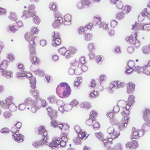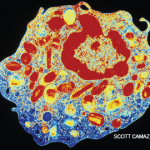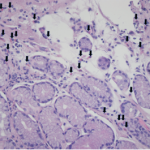Dr. Bochner has co-authored a paper on when to consider specific tests in patients with hypereosinophilia syndrome (HES) and suggested it as a guide.1
“In many of these conditions, one of the deadliest complications is endomyocardial involvement—that’s why troponin is on this list of potential tests to order. Some of the worst patients I’ve seen had CBCs [complete blood counts] without a differential in the emergency [department], had chest pain, had normal coronary arteries by catheterization and turned out to have HES with cardiac involvement. The troponin was not due to ischemia, but instead was due to eosinophils infiltrating the myocardium,” he said.
In recent years, several anti-eosinophil therapies have been approved for the treatment of eosinophilic asthma, including mepolizumab, resluzumab and benralizumab. Others in development include dexpramipexole, an oral agent related to the existing drug pramipexole, a dopamine agonist that was inadvertently found to reduce eosinophil numbers and anti-Siglec 8, a monoclonal antibody that targets eosinophils and mast cells. Although none of these are approved by the U.S. Food & Drug Administration for HES treatment, published data suggest some agents have efficacy, Dr. Bochner said.
He said answers to some key questions could help improve treatment of hypereosinophilia-related disorders.
“I wish we had better biomarkers for assessing disease activity,” he said. “We all follow the eosinophil counts and that’s about as good as it gets. I wish we had less invasive ways of imaging eosinophilic inflammation instead of having to do biopsies. We still don’t understand what causes eosinophil activation in these disorders, or what perpetuates it.”
Note: Dr. Bochner is a consultant for GlaxoSmithKline, AstraZeneca and Teva Pharmaceutical Industries, which develop drugs for hypereosinophilia disorders, and he’s a co-holder of Siglec-8 patents, entitling him to a share of future royalties on products protected by those patents.
Thomas R. Collins is a freelance writer living in South Florida.
References
- Khoury P, Bochner BS. Consultation for elevated blood eosinophils: Clinical presentations, high value diagnostic tests, and treatment options. JACI-In Practice. 2018. In press.



